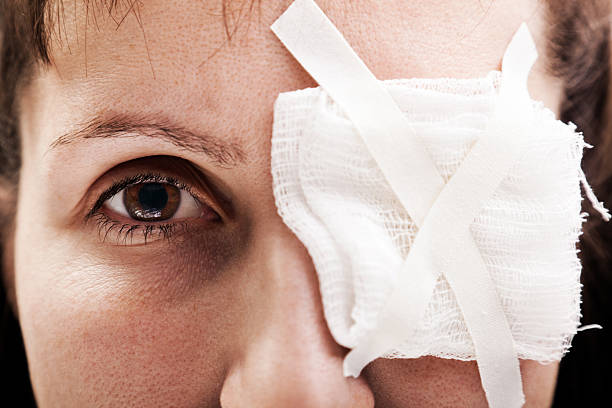The human eye is incredibly sensitive and vital for navigating daily life, making any injury to it a significant concern. Eye injuries can happen unexpectedly—from a sudden impact, flying debris, chemical exposure, or burns. Whether at home, on a job site, or outdoors, the risk is always present. Knowing how to respond immediately when someone experiences an eye injury can help protect their vision and reduce the chance of long-term complications. Prompt and careful first aid can determine whether an eye heals well or suffers lasting damage that affects daily function.
Different injuries require precise responses
Injuries to the eye vary widely, including scratches, foreign object intrusions, burns, blunt force trauma, and chemical splashes. Each type of injury requires a unique response, and guessing or applying the wrong first aid method can worsen the outcome. Acting calmly and with the right approach helps preserve sight while waiting for professional care to arrive.
Common Causes of Eye Trauma and Their Effects
Accidents involving the eyes often stem from everyday activities like cleaning, cooking, playing sports, or handling tools. Even minor contact from small objects such as dust, wood chips, or makeup brushes can cause significant discomfort or corneal scratches. In more severe instances, chemicals or physical force can rupture blood vessels, lead to swelling, or even threaten loss of vision. Blunt trauma from sports equipment or a fall may not result in obvious damage at first but could lead to internal bleeding within the eye. Many people tend to rub their eyes after feeling pain, which can worsen the situation by pushing debris further in or aggravating delicate tissues. Immediate action such as rinsing with clean water or stabilizing the head until help arrives can slow the progression of damage. It’s also important to note that individuals may not fully express the seriousness of their symptoms. Children, for example, may only say their eye hurts without explaining what happened, requiring caregivers to act quickly and observe changes like redness, excessive tearing, or light sensitivity. Attending sessions such as cpr training kitchener can introduce useful protocols for responding to these situations with confidence and caution. Even small measures taken early can influence long-term eye health positively.
Handling Foreign Objects and Irritants
Foreign objects in the eye present a common type of injury and demand immediate but gentle care. This may involve a speck of dust, a metal shaving, or an eyelash stuck under the lid. In many situations, blinking and tearing naturally flush out small particles, but when that fails, rinsing the eye with clean, lukewarm water is often the safest option. Avoid using fingers, cotton swabs, or tissues to remove the object, as these tools can scratch the surface or cause deeper injury. Larger debris or sharp fragments, such as broken glass or splinters, require careful immobilization—attempting to remove them could lead to severe consequences like corneal lacerations or infection. Keeping the injured eye closed and minimizing head movement helps prevent the object from shifting. When chemicals are involved, time is critical. Continuous flushing of the affected eye with cool water for at least 15 minutes is necessary to dilute and remove the substance. The person should be positioned so that the injured eye is lower, preventing the chemical from draining into the other eye or onto the skin. After rinsing, covering the eye loosely with a clean cloth or sterile dressing helps protect it from light and further irritation until a medical team evaluates the damage. Ensuring that household chemicals are clearly labeled and stored out of reach is one preventive measure, but accidents still occur. The faster someone responds correctly, the better the chance of preserving eye health.
Responding to Blunt Force and Penetrating Injuries
Blunt force to the eye can cause anything from temporary bruising to a detached retina or internal bleeding. Symptoms may include sudden blurry vision, pain when moving the eye, or swelling around the eyelids. If any of these occur, the injured person should be encouraged to lie down and remain still, avoiding any pressure on the eye. Applying a cold compress gently to the area surrounding the eye may reduce swelling but should never press directly against the eyeball. Penetrating injuries—such as those caused by sharp tools, broken glass, or projectiles—are medical emergencies. Never attempt to remove embedded objects, and avoid rinsing if it may move the item further. Instead, stabilize the object by surrounding it with padding, being careful not to press inward. Covering both eyes helps prevent involuntary movement of the injured eye, as both eyes move in tandem. Emergency services should be contacted immediately, and the person should remain calm and as motionless as possible. These injuries are among the most dangerous due to their high potential for infection, nerve damage, or permanent vision loss. Early and accurate response can make the difference between sight preservation and long-term impairment.
Protective Measures and Recovery Considerations
Eye protection remains the most effective way to reduce the chance of injury, yet many people still overlook this when engaged in tasks like gardening, sports, or construction. Protective eyewear such as safety goggles, face shields, and UV-blocking sunglasses offers a critical barrier against debris, light, and hazardous fluids. In the event of an injury, recovery extends beyond the initial response and may include medication, follow-up visits, and lifestyle adjustments to prevent further strain. Resting the affected eye, following instructions regarding drops or ointments, and avoiding environments with smoke or dust support healing. People who wear contact lenses should pause use during recovery unless cleared by a medical provider. For children or elderly individuals, extra supervision during healing prevents accidental irritation. Understanding how to identify whether vision changes are temporary or ongoing helps determine when further treatment is needed. Vision therapy or corrective surgery may follow in more complex cases, depending on the nature of the injury. Regardless of severity, emotional support also plays a role. Losing or partially losing vision—even briefly—can cause anxiety or frustration. Reassurance, education, and access to proper care allow for smoother recovery both physically and emotionally.
Conclusion
Eye injuries can escalate quickly if not addressed with precision and care. Whether caused by debris, chemicals, blunt impact, or sharp objects, each situation demands calm, thoughtful action tailored to the type of trauma involved. Early steps such as flushing, immobilizing, or shielding the eye create a buffer that protects vision until professional help is available. From common household incidents to outdoor accidents, knowing how to respond makes a profound difference in recovery. Vision is a precious sense, and treating eye emergencies with seriousness, preparedness, and appropriate action ensures that this vital part of our daily lives remains protected and preserved.





Leave a Reply